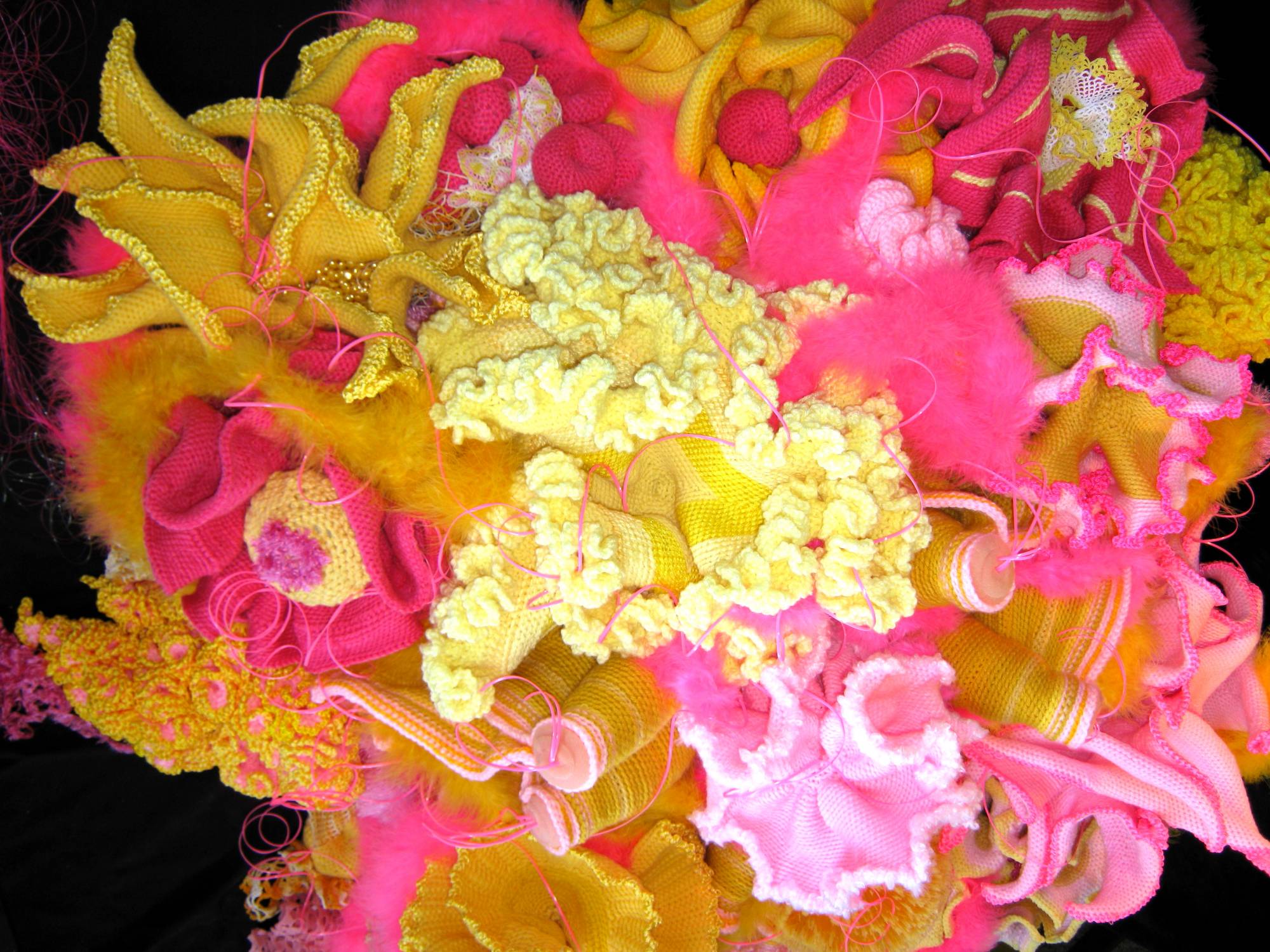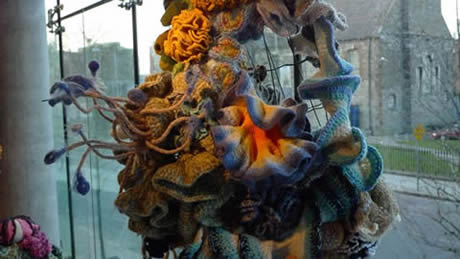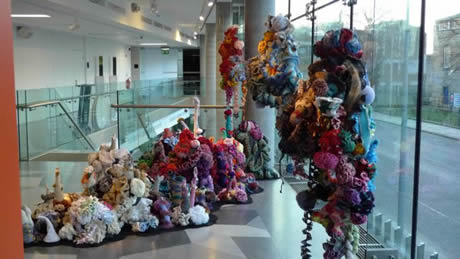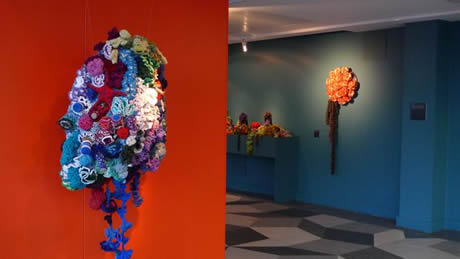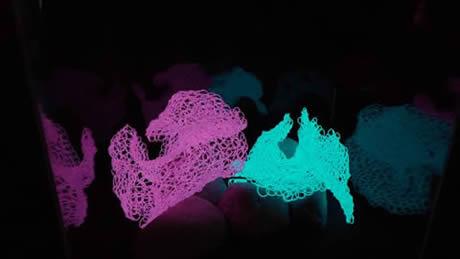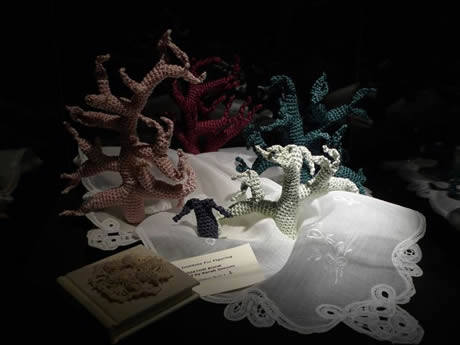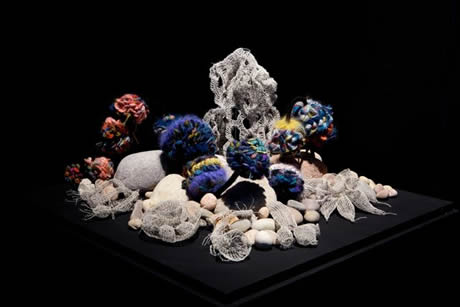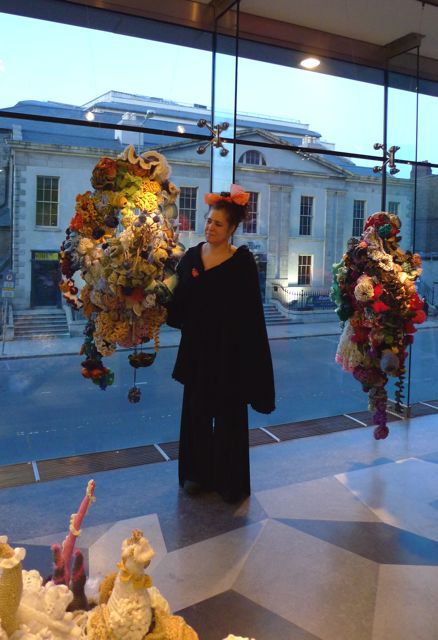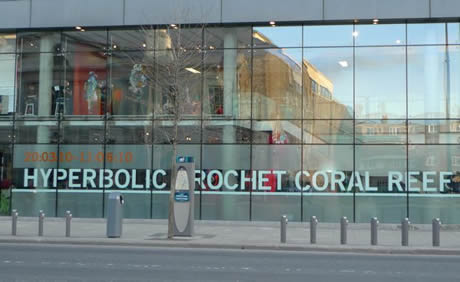During Spring 2010 the Crochet Coral Reef was on exhibition at the Science Gallery, Trinity College, Dublin. Founded in 2008, Science Gallery was established for the purpose of doing exhibitions at the intersection of the sciences and the arts. The setting of the gallery within a college context enables a unique collaboration between curators and an academic community. For each exhibition, science and engineering students are trained as “mediators” to work as on-site guides engaging visitors in discussions and demonstrations of the underlying science behind the art.
The installation included a purpose-built Maths Chapel, a newly created Bleached Bone Reef, and a wild, site-specific incarnation of our all-plastic Toxic Reef.
For the Crochet Reef, Science Gallery was a perfect setting for the mathematics underlying the project – the gallery floor is laid out in the pattern of a Penrose Tiling, a 2D mathematical “tessellation” that reflects symmetries of higher-dimensional hyperbolic spaces. The room asserts its own identity — the very opposite to the canonical ‘white cube’ — and for Reef, the ensuing mix of styles added up to aesthetic whole more than the sum of the parts, a look we describe as Alice-in-Wonderland on Acid.
Highlights of the exhibition include:
- A specially built “Holy Jewel Room” displaying delicate works by the Reefs’s most skilled Core Contributors, in a series of Pod World vitrines.
- A new pop-art wonder-work by the mysterious Dr Axt, entitled Reeficus Yellownicus, plus her original crocheted Reeficus in red, white and pink – that inspired a Bjork costume.
- An Irish Satellite Reef created by the people of Ireland.
- A section of the Latvian Reef, along with a selection of hanging panels from the Latvian Schools Reef.
The Irish Satellite Reef was organized by Irene Lundgaard and Orla Breslin with contributions from Felt Makers Ireland.
The Latvian Satellite Reef was coordinated by Tija Viksna of Gallery Consentio in Riga. The Latvian Schools Reef was co-led by Tija and Laila Strada of the Children’s Art School in Mazsalaca.
The Crochet Reef Project has been supported by grants from the Annenberg Foundation, the Andy Warhol Foundation for the Visual Arts, and the Norton Family Foundation.

